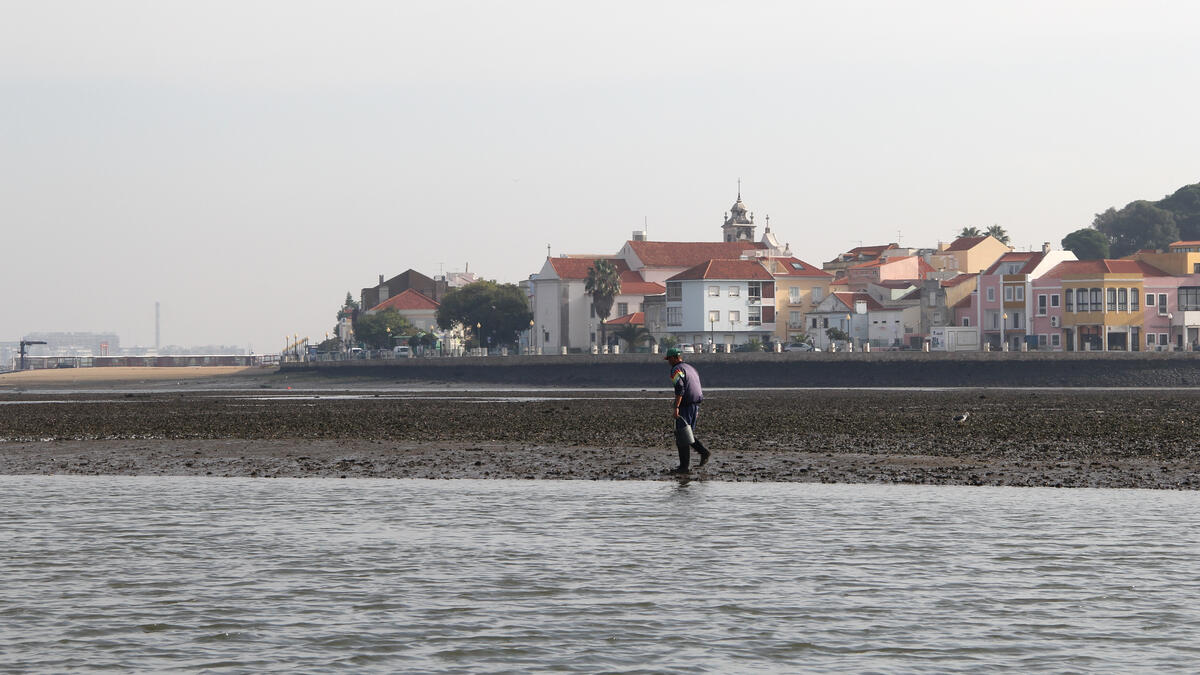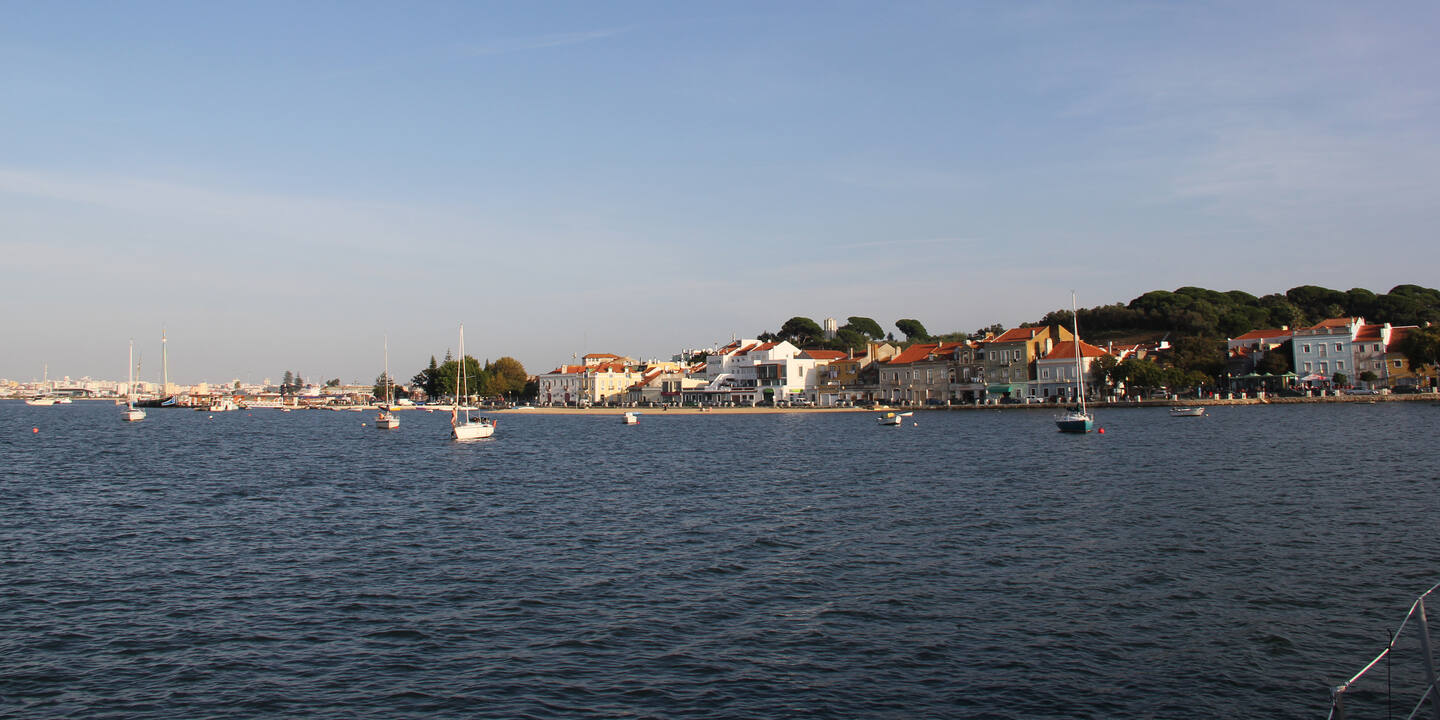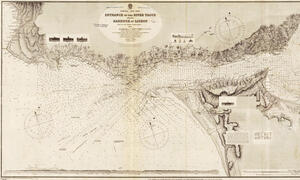
Upon departing North America and Greenland – as we last left the reader in these pages, Cape Farewell receding astern – future plans saw Kiwi Roa based around Europe and the North Atlantic, ventures to the likes of Iceland and Svalbard on paper. For the northern winters a southern base was desirable, and one that would provide for a New Zealand yacht to spend years in and around the EU. The compass heading was SE.
Originally we intended to stop at the Azores, but by the middle of December we were too late, weather depressions beginning to track across the route. After five days of struggling with contrary winds Peter got the message and re-shaped course directly for the Iberian Peninsula. The winds gave us five days of fast reaching after which a high expanded out as far as the English Channel and sat over the Atlantic for a week. After 600 NM of calm we found the Portuguese trade winds and again reached the final miles to the Portuguese coast.
This collection of photos is spread over two pages. Boaters inspired by the following Photo Story should recognize that this is not a cruising guide nor navigational aid.
A European winter refit base: Lisbon and Seixal
We made landfall under a poled yankee at the mouth of the Tagus River (Rio Tejo), the headland of Cascais forming its northern coastline at the Atlantic. Here there is safe anchorage for any winds except southerlies, and also a marina if desired, that might provide sleep and timing of tides before pushing the extra miles in toward Lisbon and surrounding towns. Ashore, the area is developed for tourism, or at least the façade of the seafront, the beaches lined with apartments, hotels, and casinos. More interesting are the historic buildings, particularly five centuries’ worth of fortifications that the modern additions cluster around. The squat walls of the Citadel of Cascais border the beachline from a view at anchor – at one end, a foreboding complex of pentagonal fort towers; at the opposite defensive position, a cyan swimming pool has been installed.
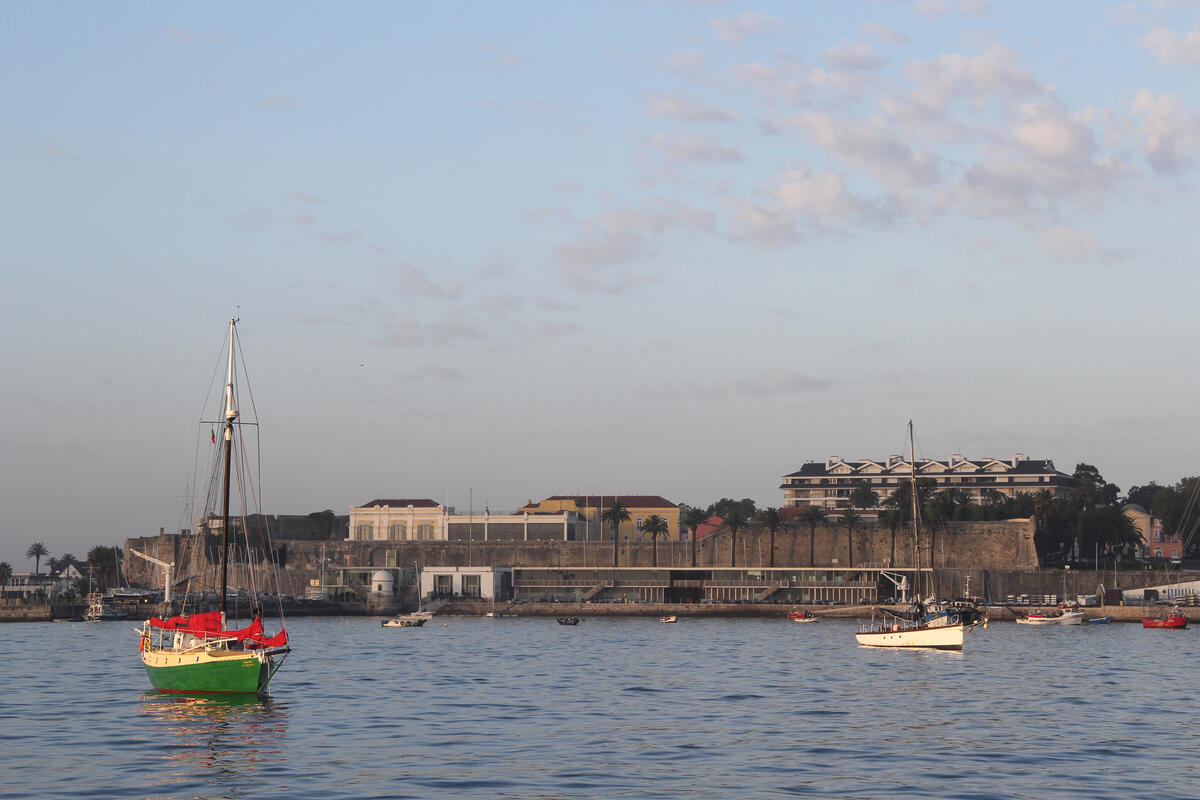
This southern-European mix continues along the coast.
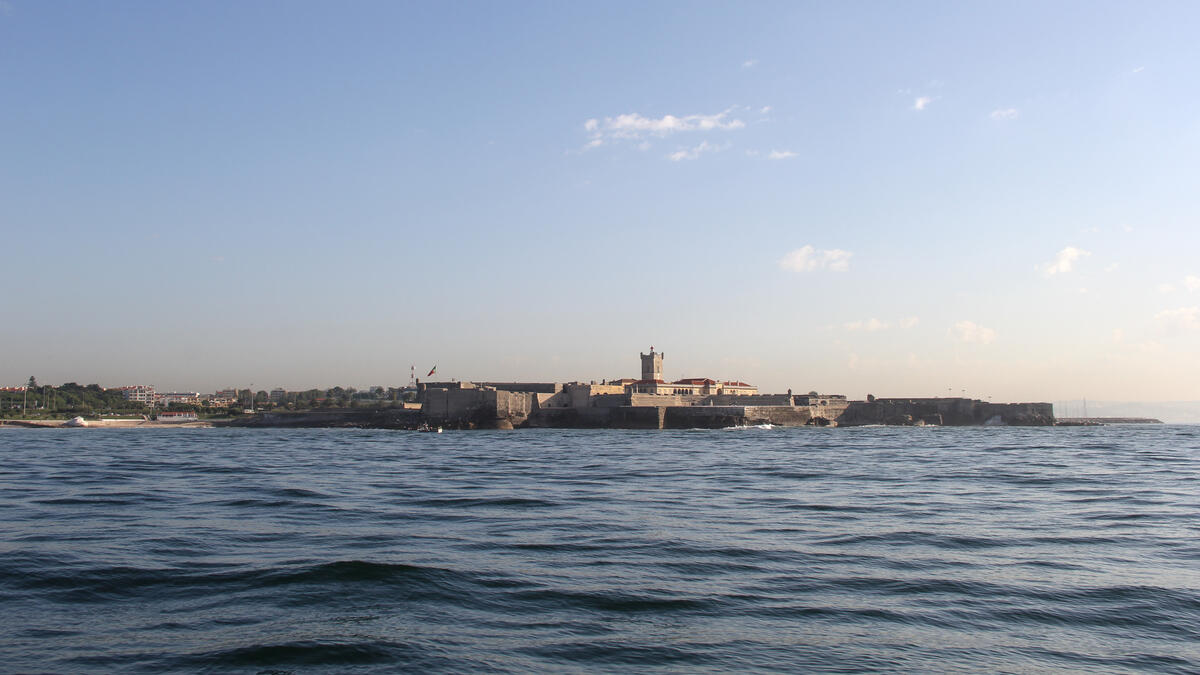
16th century fortifications stand now as the ceremonial gateway to the Portugeuse capital.
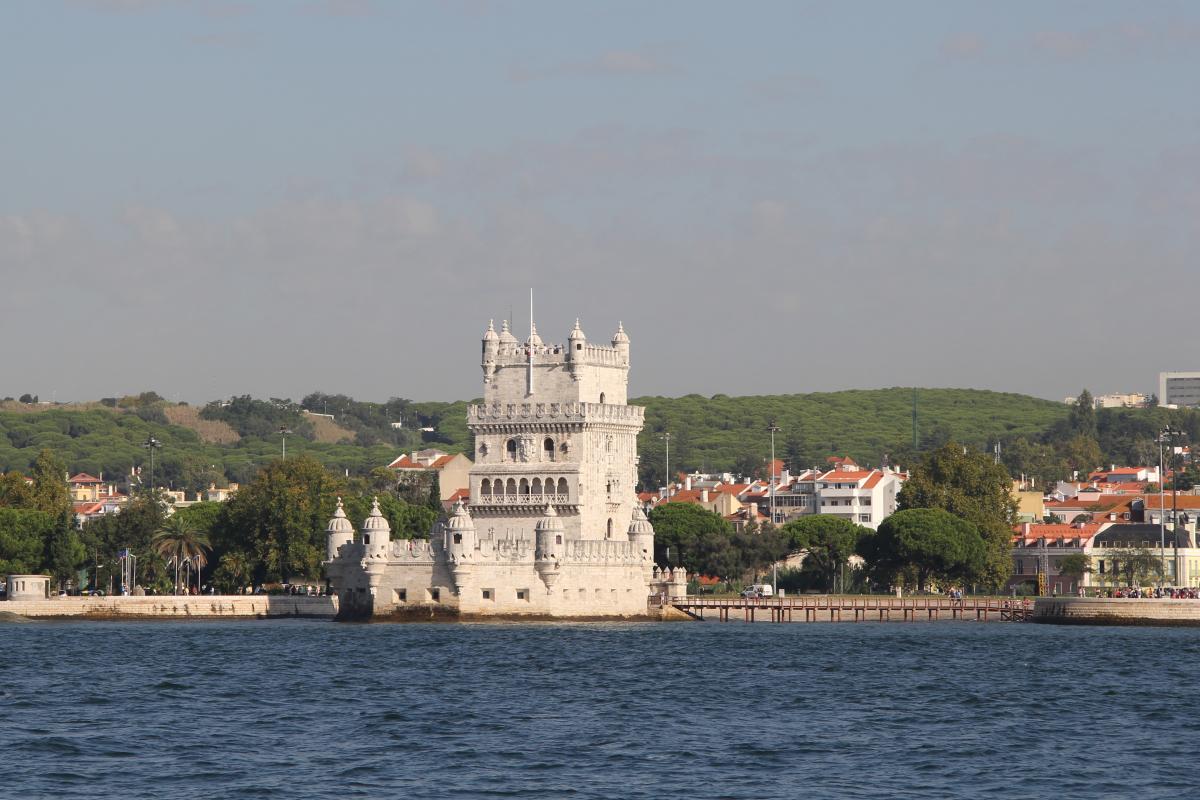
After recovering from the transatlantic, we first made for Doca de Alcântara marina near central Lisbon, the likeliest to accept transient visitors and provide a good starting base. Really the whole area from the Cascais headland inward is sprawl, and the suburbia is carried over to the southern shores by two large bridges, under one of which we transited to find Doca de Alcântara just beyond. The steel suspension bridge is named Ponte 25 de April for the bloodless one day ‘Carnation Revolution’ of 1974 that ended the Estado Novo regime.
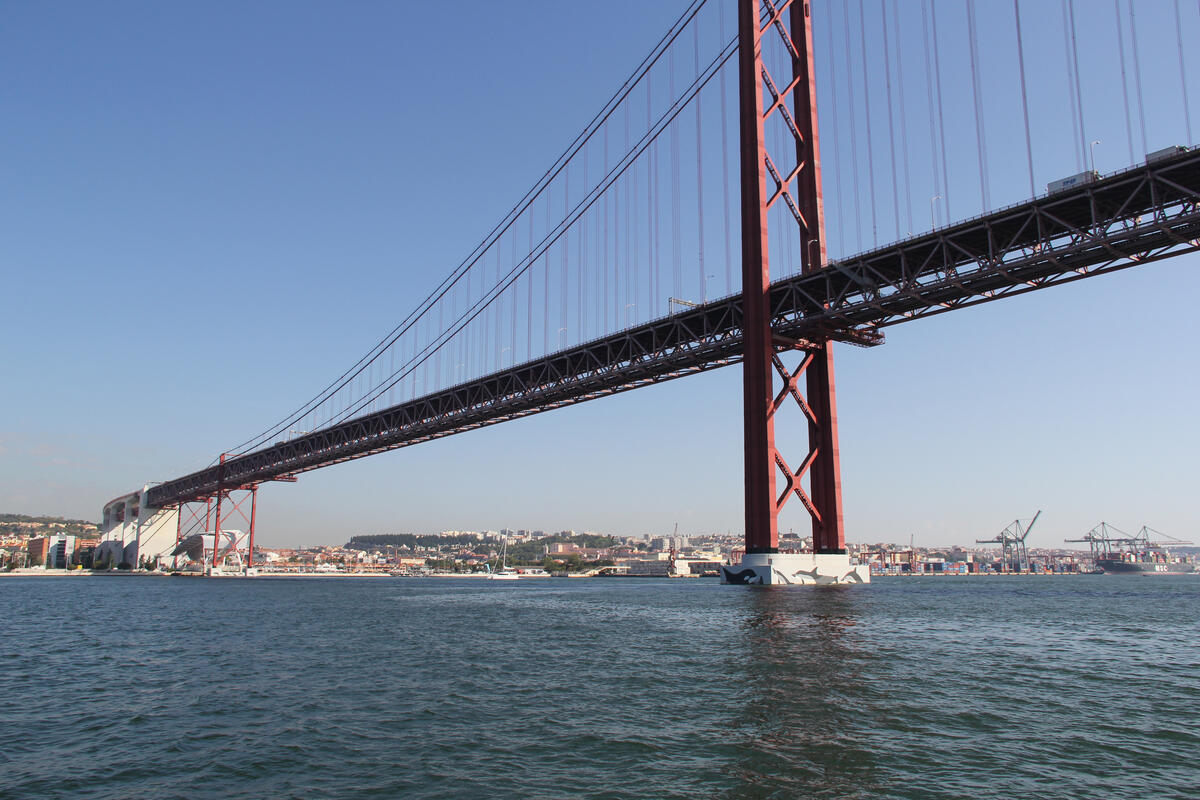
Inspiration from the colonies, the Santuário de Cristo Rei stands atop the Tagus banks.
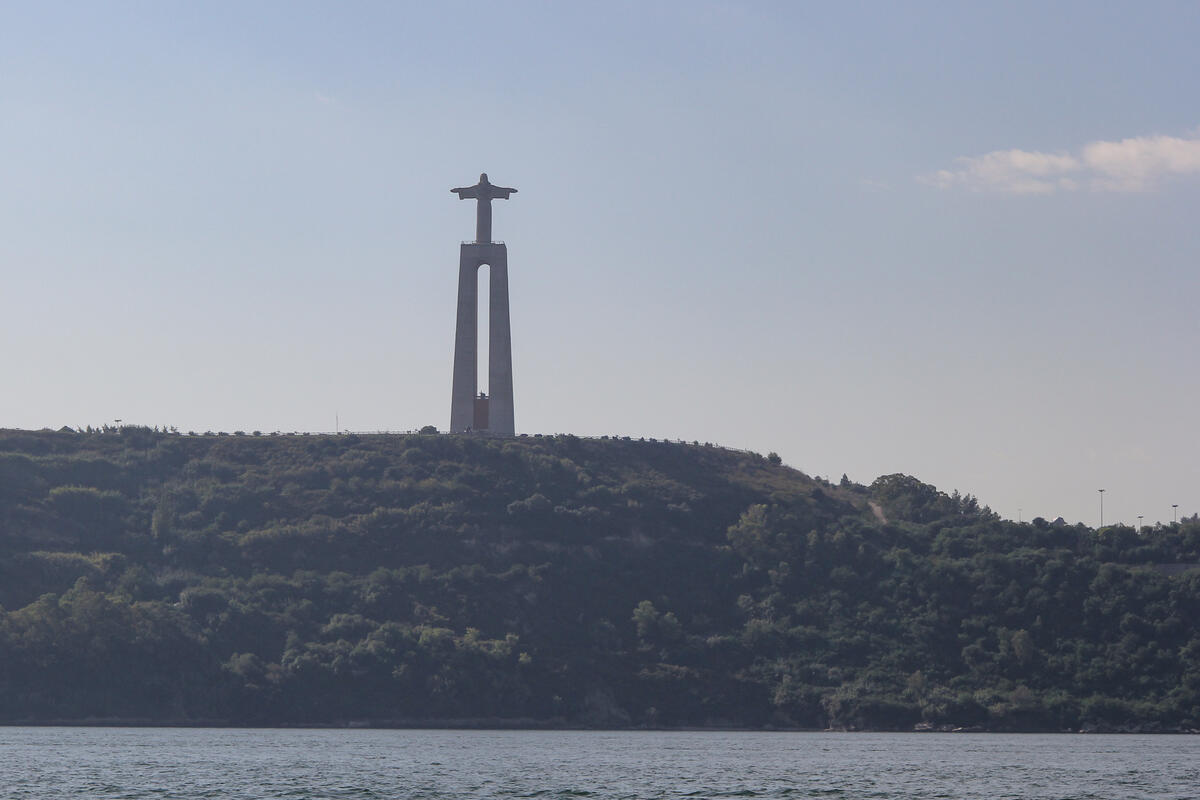
The Alcântara marina was a good home for a few weeks and a good base for various Lisbon-centric tourist activities.
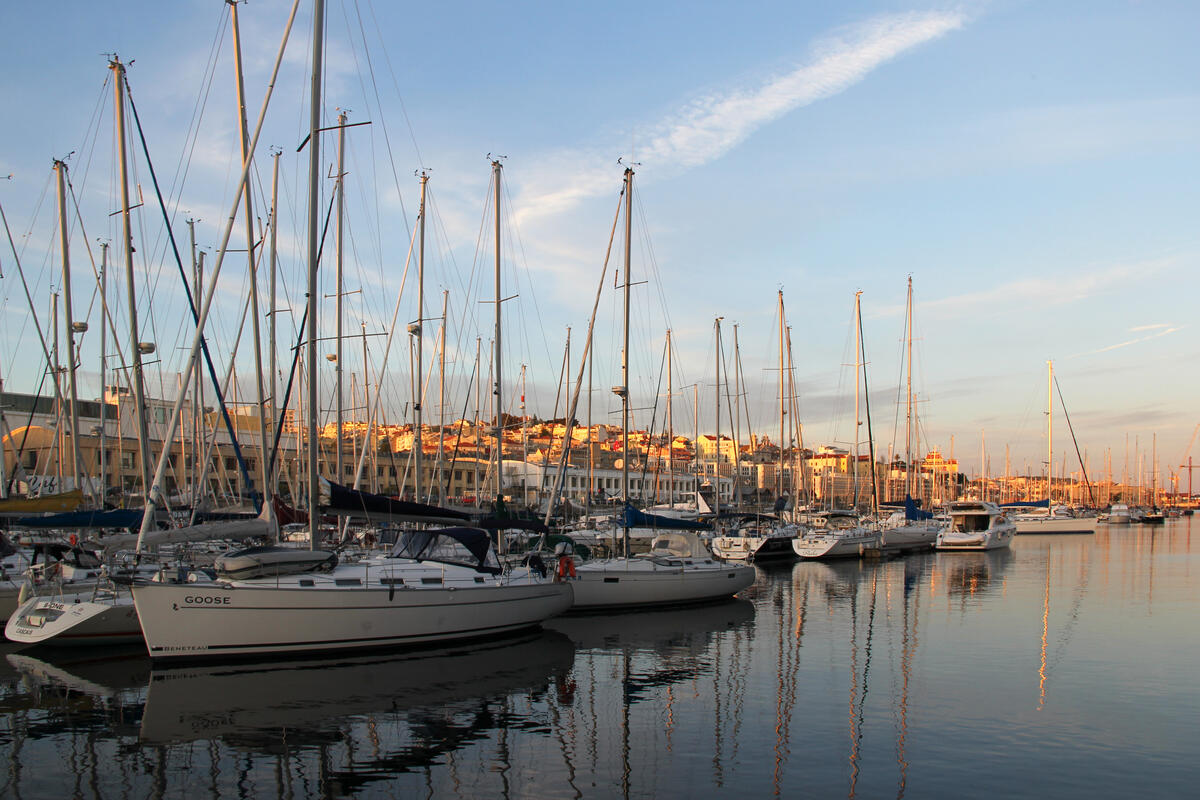
It is a municipally operated marina berthing mostly permanent boats, so there are no seasonal rates – they use a sliding scale based on days stayed.
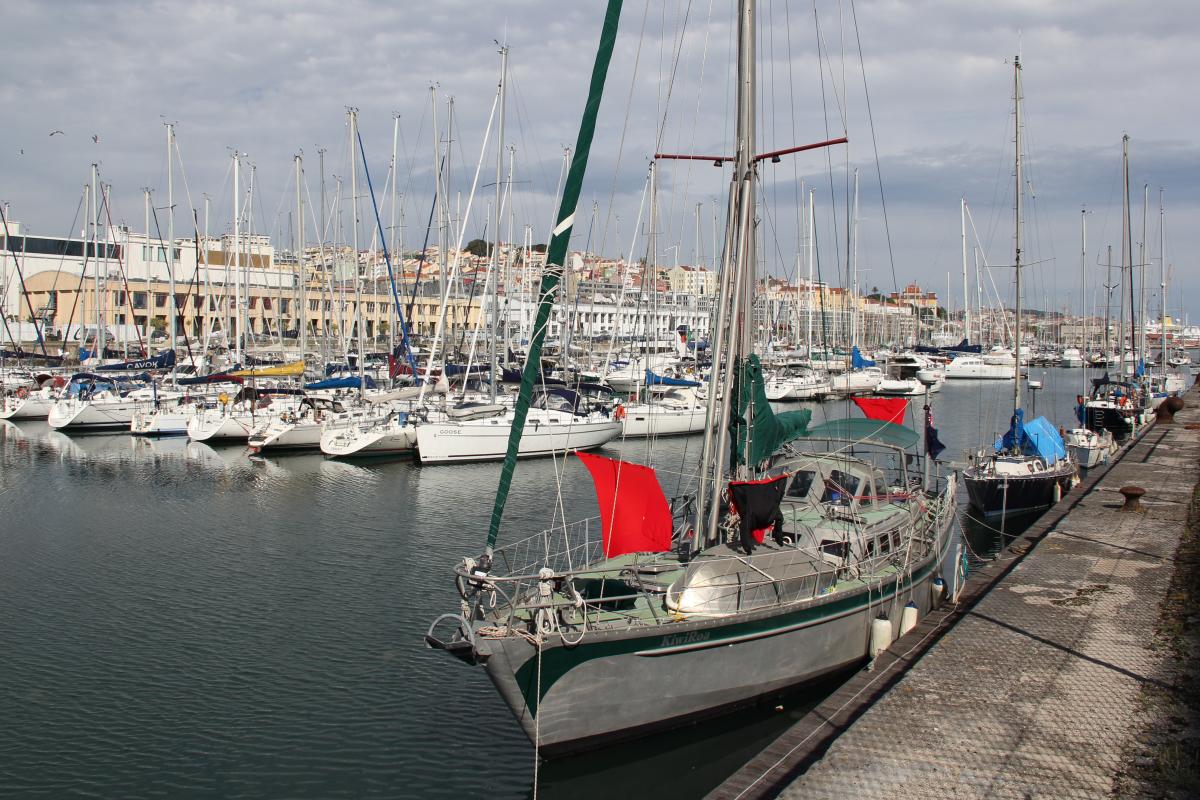
Predating 20th century drama is Portugal’s more marketable history – walking distance from Doca de Alcântara, back before the bridge, is the enormous Monument to the Discoveries, celebrating the golden Age of Exploration involving Portuguese sailors and investors. In the form of a ship’s prow, the work is a tall slab of concrete and limestone, lined on either side by historical figures and headed by Prince Henry the Navigator holding a carrack. They stare out to the harbor, at their feet a small boat marina berthing dozens of the modern Portuguese sailor’s more modest efforts.
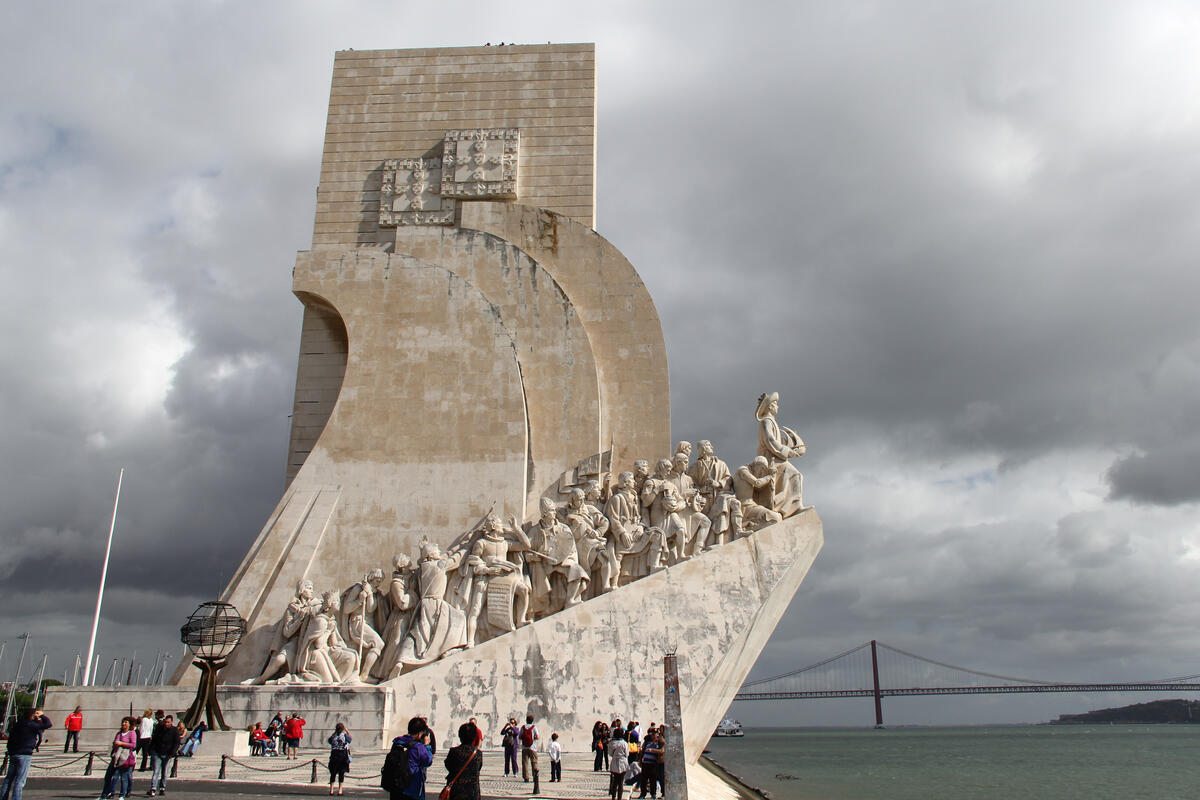
Lisbon downtown…
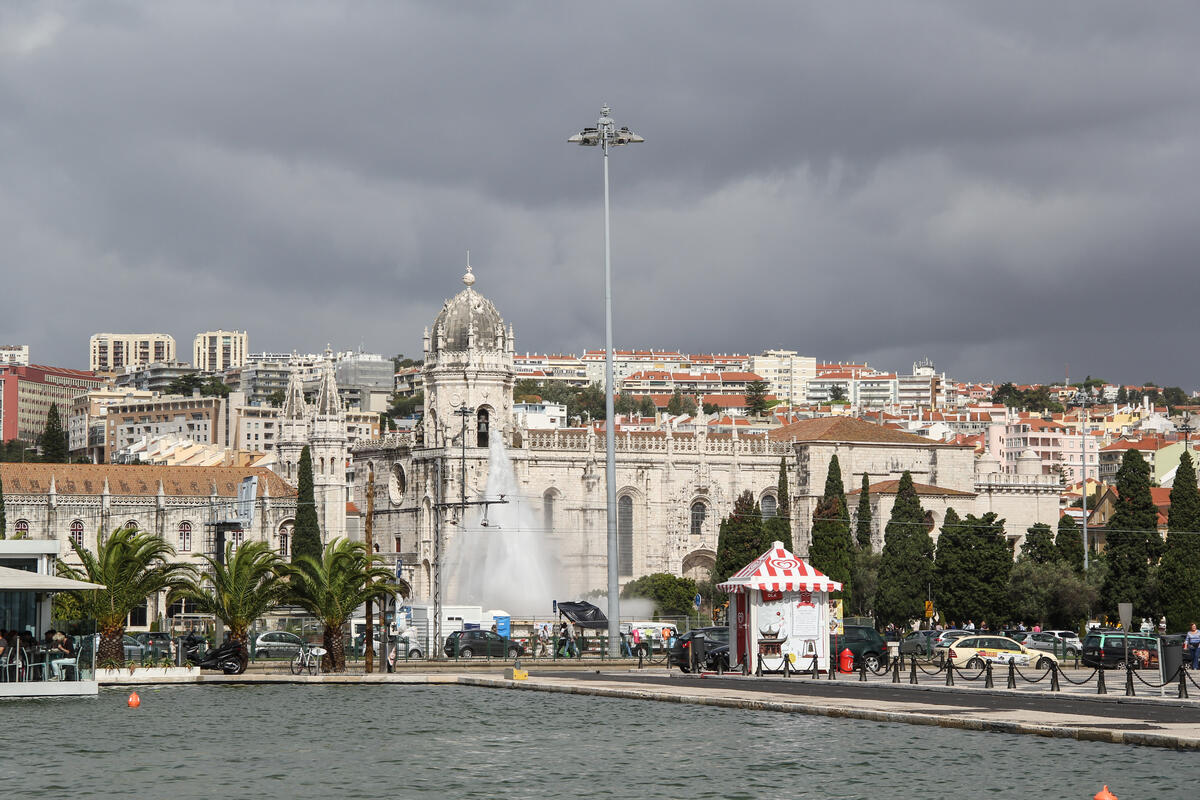
…and suburbs.
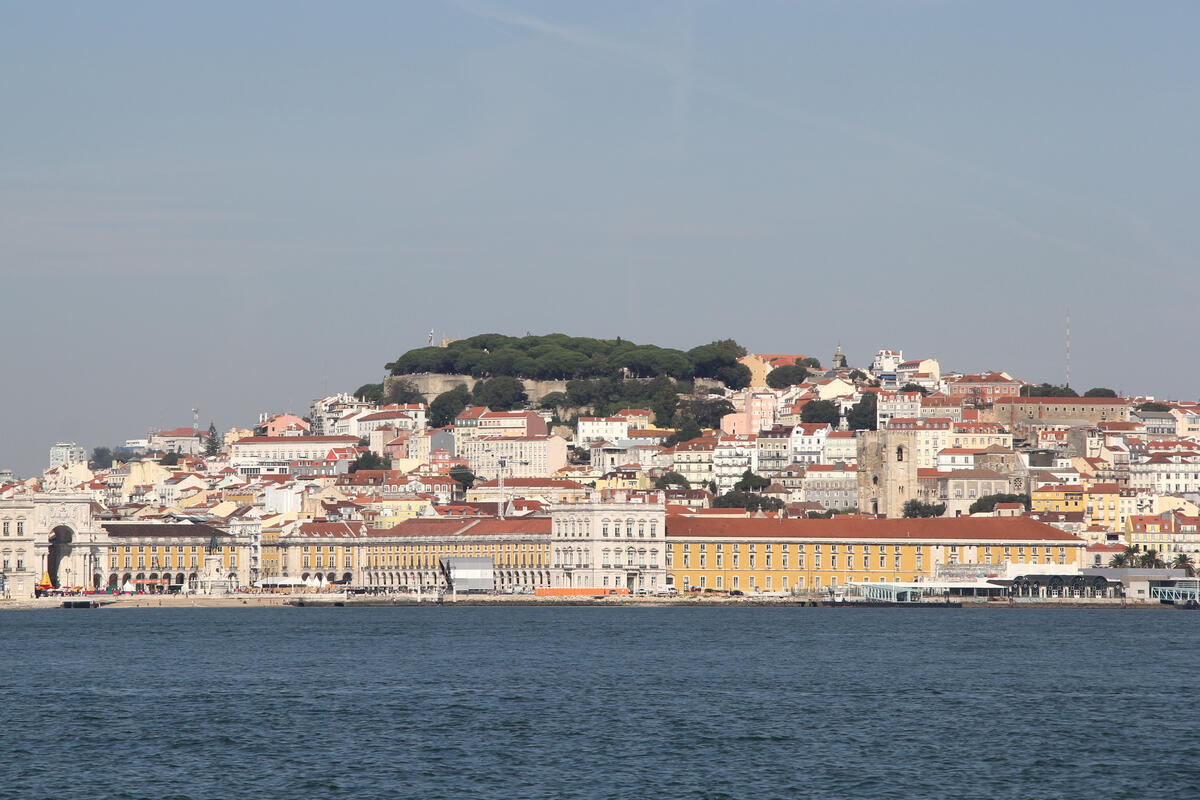
The Tagus River widens inside its mouth into a large estuary, many miles across, before it continues up into the continent.
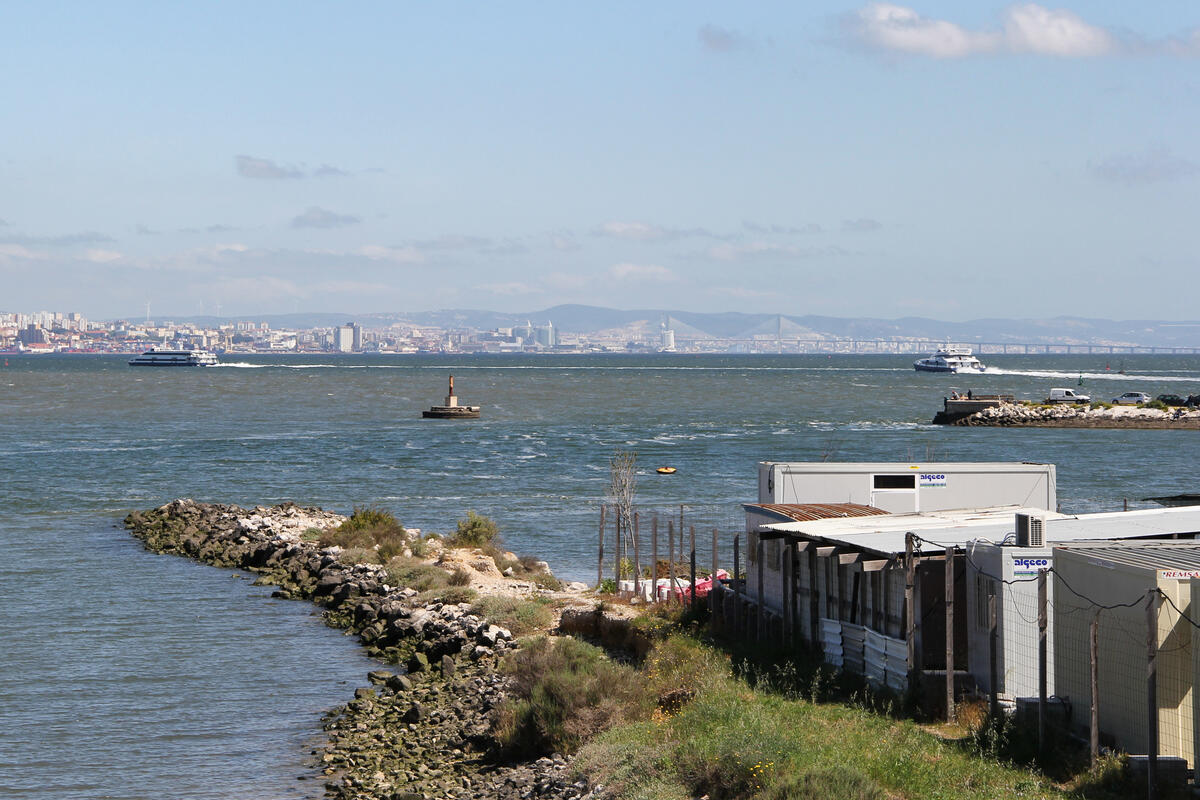
While the Lisbon coast is fairly uniform, the southern banks are broken by a complex of bays and inlets formed by tributaries and sub-estuaries. On a peninsula almost directly south of Lisbon proper is a town by the name Seixal, a river and fishing center once known for its dockyards and ship building, and now a property developer’s dream.
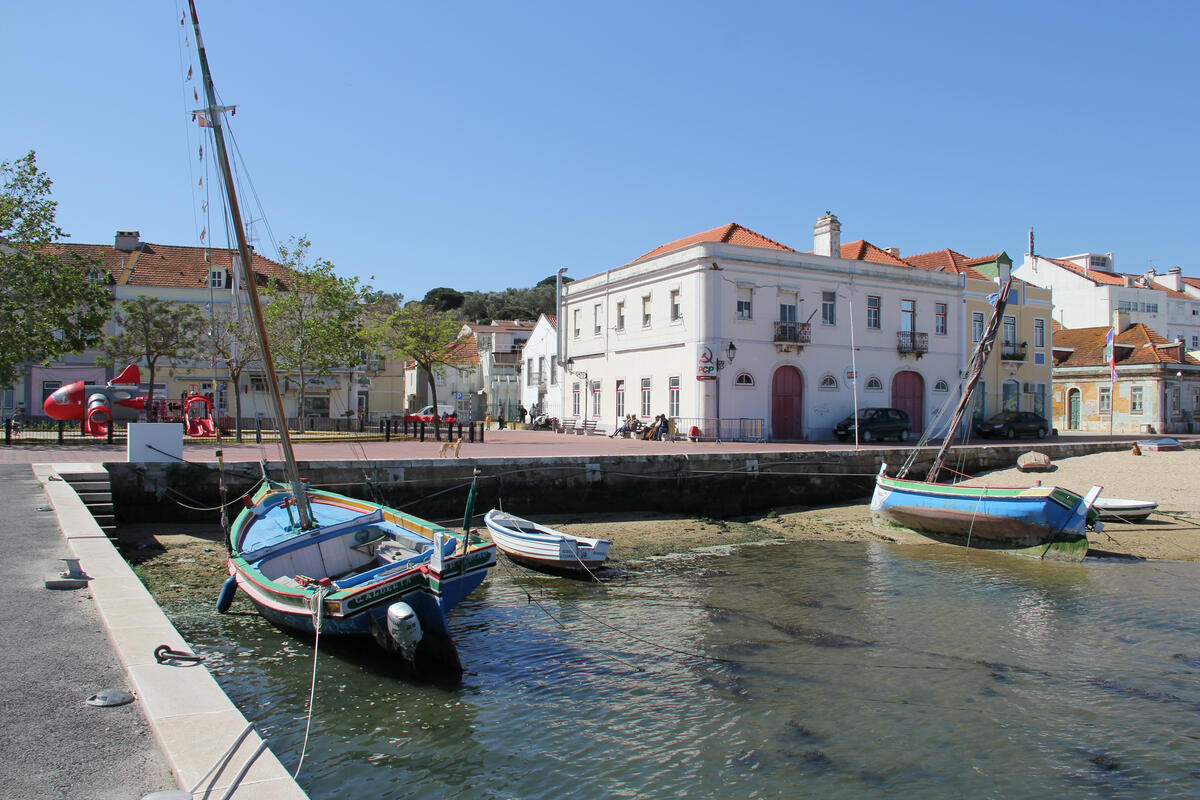
Kiwi Roa anchored here amongst small local boats bobbing at moorings, waiting in a holding pattern before progressing to our final destination.
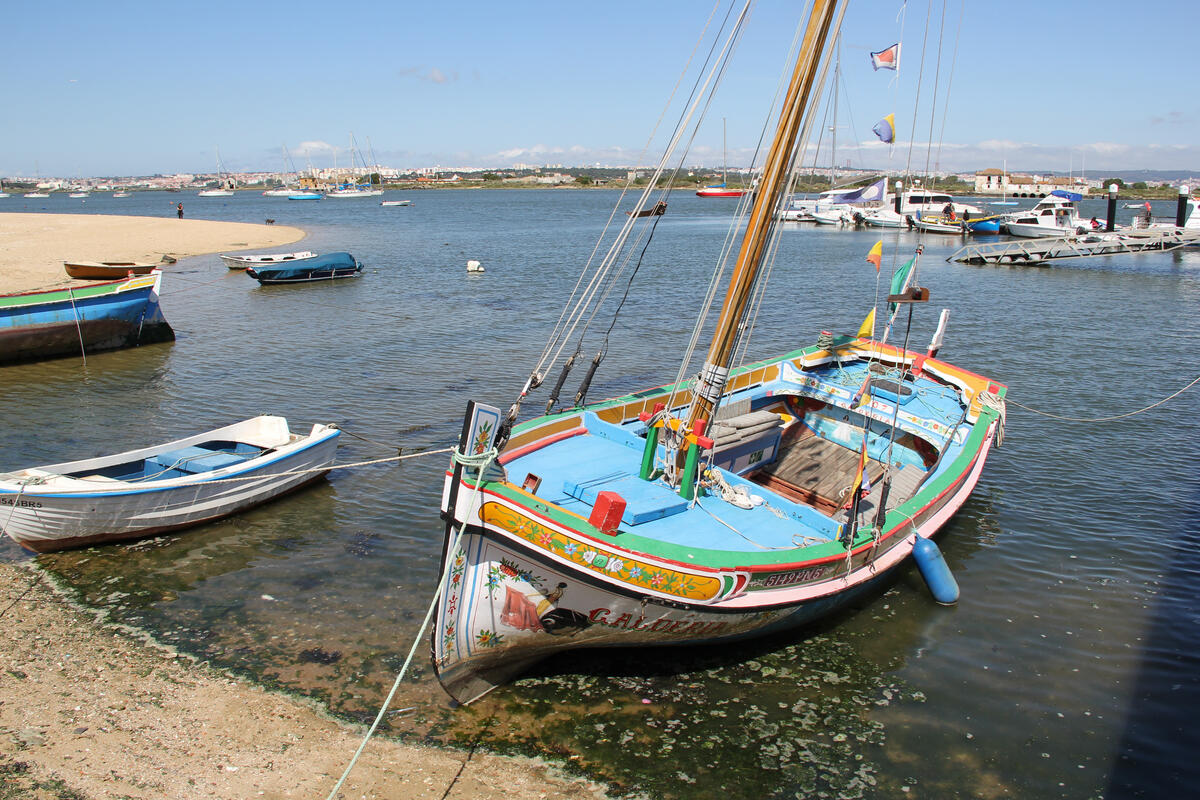
Ashore, neat little buildings of yellow or white walls and clay-red roofs lined the stonewall and yellowish beach waterfront…
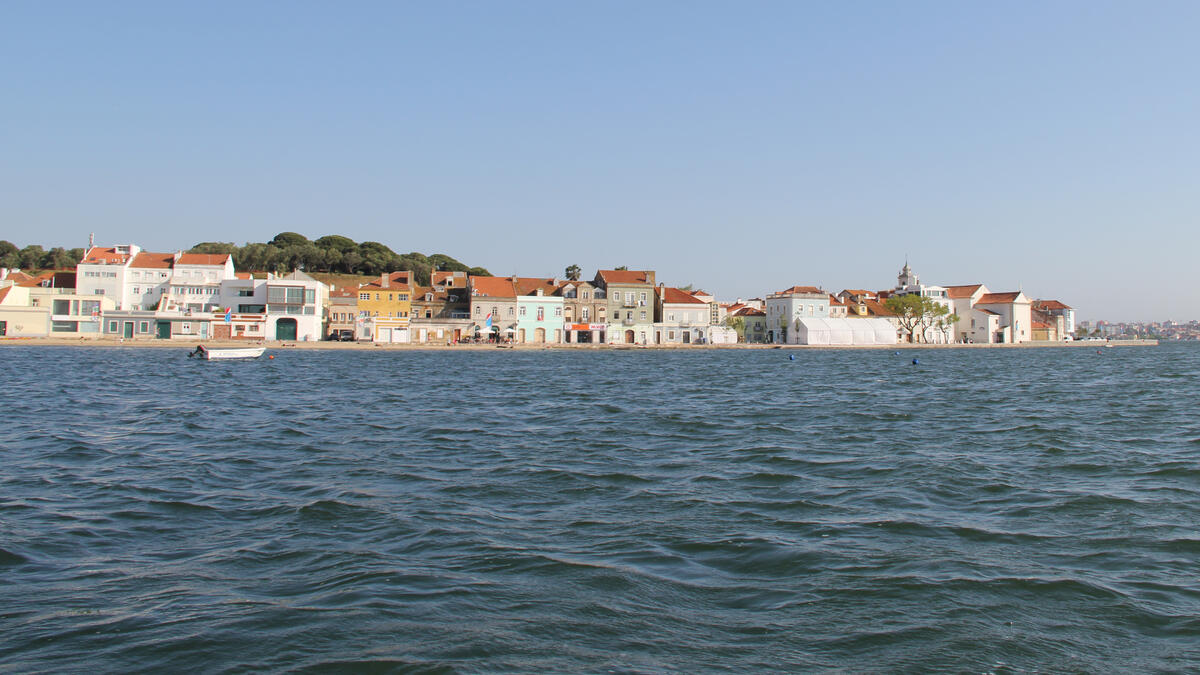
…and continue the streets behind.
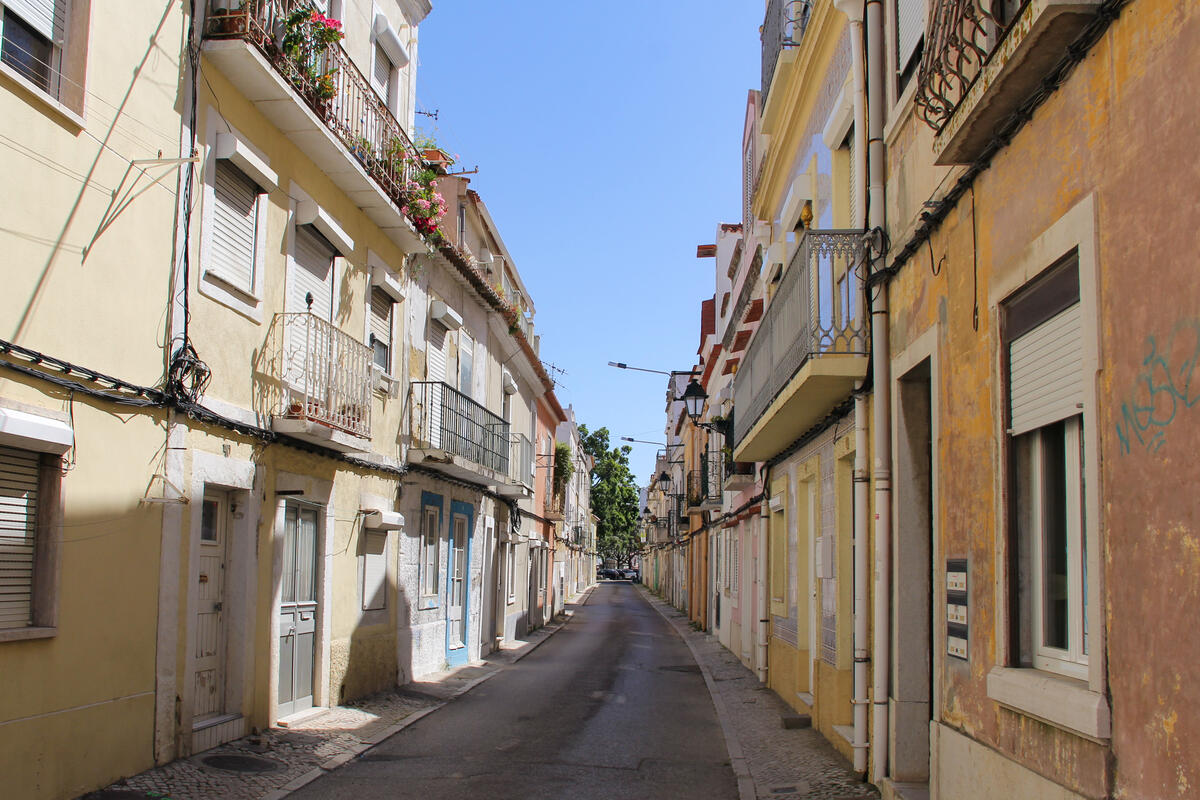
At low tide, the mudflats are exposed, and locals appear in boots and carrying buckets, collecting shellfish. Ferries depart routinely for Lisbon, 25 minutes and 4 euros away.
